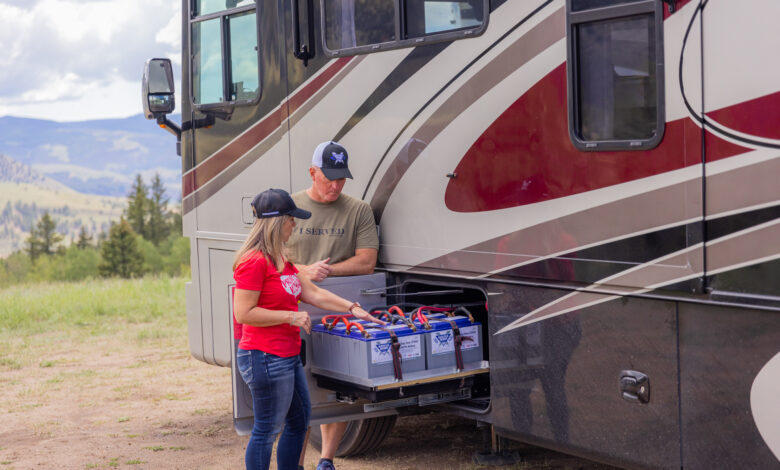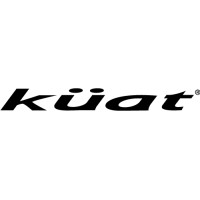The Next Move in Sustainability: Making the Switch to Lithium
Consider moving to an RV energy solution that’s beneficial for the user and the environment.

Moving toward sustainability in the RV manufacturing industry is widely accepted as a nonnegotiable. The industry must continue to make moves toward greener, more environmentally friendly initiatives to stay relevant and entice buyers. Today’s RV buyers are seeking companies with sustainable products and practices more than ever before.
There are many ways RV manufacturers can incorporate sustainability into their businesses, from integrating eco-friendly building materials, to reducing environmental impact during the manufacturing process, and using responsible waste reduction and recycling programs. These efforts help decrease the overall environmental impact – but there is one thing they’re missing: a direct customer benefit.
In addition to sustainability, customers are looking for luxuries in their RVs. Upgrades, improvements – anything that makes life on the road or off the grid a little more like home, as ironic as that is. One solution that provides both a significant improvement to sustainability and customer experience: lithium-ion batteries.
Lead-Acid Battery Concerns
Lead-acid batteries have been part of our lives for so long, it can be easy to forget how terrible lead is for not only our environment but also our bodies. Lead is a highly toxic metal, and it’s responsible for roughly 900,000 deaths annually across the globe. Worldwide, an estimated 33% of children suffer from lead poisoning.
The majority of the global consumption of lead (85%) is for the production of lead-acid batteries. The inclusion of this toxic metal makes these batteries difficult to dispose of in a safe way. Batteries thrown into a landfill can corrode, leaching lead and lead-contaminated sulfuric acid into the environment. This can cause lead contamination via the groundwater, into bodies of water where it threatens aquatic life, into the soil and then blown into the wind, or even into the air. While it is illegal in most states to dispose of lead-acid batteries, often unregulated and informal recycling programs can become a problem and result in environmental contamination.
It’s hard to say exactly how much environmental contamination a single lead-acid battery could cause, and it depends on several factors:
- How the battery was disposed
- The efficacy of the recycling practices
- The specific battery type and its condition (older batteries or one with a leak would threaten a higher level of contamination)
- The soil and environmental conditions of where the battery
- is disposed
However, in 2010, the United Nations Environment Programme (UNEP) estimated that 3.6 million tons of lead were emitted globally that year alone, with 65% of that linked to waste management and recycling of lead-acid batteries.
While several countries have implemented regulations on lead-acid batteries and their disposal, and recycling facilities are doing their part to improve emission controls and reduce contamination, there are things that the public can do to help mitigate the amount of lead contamination in our environment. Awareness of responsible battery disposal is a good first step, but we need to reduce our reliance on lead-acid batteries as a whole. If we can eradicate the use of this toxic metal in our daily lives, we will reduce the amount of lead poisoning and create a safer, healthier environment.
By replacing lead-acid batteries with lithium batteries, OEMs are giving customers a sustainable, environmentally friendly way to enjoy their new rig with extended power solutions. This enables customers to stay off the grid longer, use more power without interruption and feel good knowing it’s better for the environment.
The Upside to Lithium
 Lithium batteries are nontoxic and safer for both the user and the environment. They don’t emit harmful gases, and they’re more stable than lead batteries, reducing the risk of fire. In addition to being nontoxic, lithium batteries are a green power solution for several other reasons. Lithium batteries are up to five times more energy dense than lead-acid batteries, meaning they can power an RV’s needs for longer, taking customers farther in their adventures. Compared to lead-acid batteries, lithium batteries are lightweight, lessening the weight of a vehicle or towable and, therefore, reducing fuel consumption.
Lithium batteries are nontoxic and safer for both the user and the environment. They don’t emit harmful gases, and they’re more stable than lead batteries, reducing the risk of fire. In addition to being nontoxic, lithium batteries are a green power solution for several other reasons. Lithium batteries are up to five times more energy dense than lead-acid batteries, meaning they can power an RV’s needs for longer, taking customers farther in their adventures. Compared to lead-acid batteries, lithium batteries are lightweight, lessening the weight of a vehicle or towable and, therefore, reducing fuel consumption.
Fuel consumption and emissions are also reduced with the lack of need for a generator. Lithium-ion batteries provide enough power for customers to live and play comfortably off battery power with up to three times the power than a traditional lead-acid battery. The use of lithium also promotes the use of renewable energy, as solar panels attached to the roof of the rig can provide battery charging as needed. With this power supply, generators are no longer needed, reducing fuel and emissions as well as providing a quieter escape to nature.
When it comes to battery replacement, lithium battery owners often find that an investment in a lithium power system is well worth it. Instead of buying batteries every few years, properly cared for lithium batteries can last 10 years or longer. This reduces waste significantly, as well as shipping and other environmental factors required in replacing batteries. When it does come time to replace a lithium battery, innovations in lithium recycling have seen companies like Redwood Materials and Aqua Metals capable of extracting the minerals in a form that is pure enough to be put back into the production of new batteries. This creates an even more sustainable product and process, reducing waste and reusing materials.
Dragonfly Energy, maker of Battle Born Batteries, is a U.S.-based lithium battery manufacturer that designs and assembles LiFePO4 battery packs at their Reno, Nevada, facility. With a patented process for cell manufacturing, the company will soon produce American-made lithium battery cells and further reduce a reliance on overseas imports for the battery industry. This process not only allows the company to build batteries in a smaller footprint, decreasing energy consumption and environmental impact, but it also removes the use of toxic solvents and emissions.
The transition to lithium power is quickly gaining momentum, and it’s easy to see why. Customers love the benefits of a lithium power system, as well as knowing they are doing their small part in reducing their carbon footprint.
It’s a win for OEMs, too, which are then able to tout eco-friendly options to an audience that is on the hunt for exactly that.
The future of the RV industry is going green, and lithium batteries are the path forward.
For more about Dragonfly Energy, visit dragonflyenergy.com.




